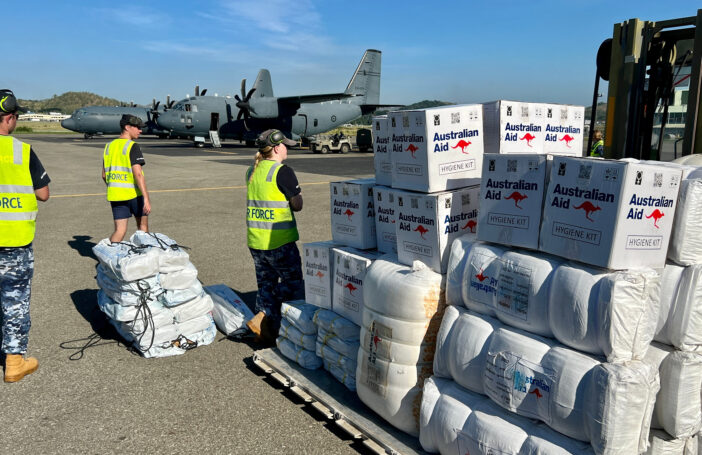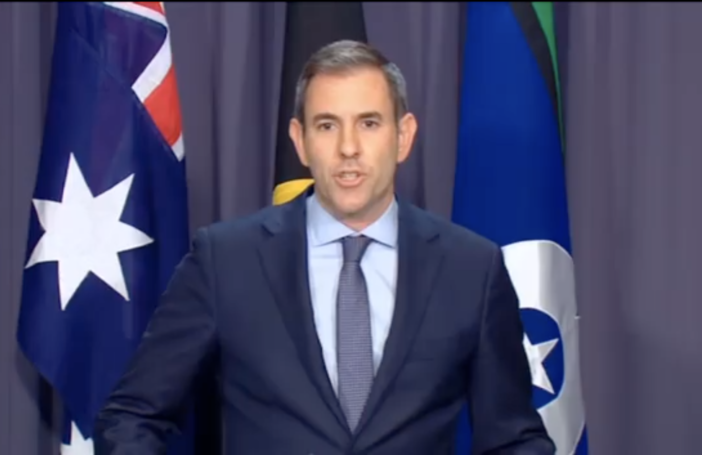We’ve got used to aid cuts. Aid has been reduced in real terms every year since 2012. Last year’s cuts were the biggest, almost $1 billion or 20%. This year’s cut seems modest by comparison, just $220 million or 7.5% (all growth rates after inflation). But that is still one of the largest reductions in the aid program ever: the fourth largest in fact.
There are, sadly, other records this budget has created as well. It is the first time that the aid budget has been cut four times in a row (the previous record was three, under deficit-cutting Hawke and aid-sceptic Hayden in the mid-eighties). The cumulative cut, of 30%, is also a record – easily. Australia’s generosity index (aid/GNI) will hit a new record low in 2016-17 of 0.23%. That’s now well below the global average – a touch over 0.3% – something we used to try to at least match. So much for being a generous nation.
The new cuts have been implemented across the board, with most programs hitched to their previous year’s value, and so losing ground against inflation. The cuts have also been managed by delaying payments to some international organizations. These delays will be made good in future years from the increased space the indexation of the aid program to inflation will provide. To the extent that this is the case, country programs will continue to stagnate.
The sectoral allocations of the budget are revealing, and consistent with this year’s cuts, which I analysed yesterday. Health and education will be further reduced in 2016-17: based on the most recent estimates, after inflation, health by 16% and education by 9%. Part of this is due to the postponement of international payments mentioned earlier, but more than that is going on. By 2016-17, health will be down by 37% since 2013-14 and education by 30% since the same year. Agriculture and infrastructure have been protected, as one would expect from a government committed to private sector development. But governance is also protected from cuts, and for the second year running emerges as the biggest sectoral spend. Despite a new humanitarian initiative for Syria and the region, and increased prominence to climate change, the “resilience” sector, which includes humanitarian and environment spending, continues to fall.
Sectoral allocations, 2013-14 to 2016-17 ($A million, constant prices)

It’s still not clear why aid has been hit so hard and so often in recent years. It is not as if recent budgets have been austere. Since 2012, aid has been cut by 30%, but total expenditure has increased by 10%. Aid has just become much less important, with the proportion of total expenditure spent on aid falling to 0.8%, another record.
Whatever their reason, the post-2012 cuts have almost completely undone the scale up of the Howard-Rudd years. As I noted last year, before that period started – about 1970 to 2004 – aid grew at an average of 1% a year. Since then, aid grew rapidly, and then shrunk rapidly, giving rise to an average growth of … 1% a year.
If you want a silver lining, that’s it. Perhaps now, aid will be fit for a less generous era. No more cuts were imposed in this year’s budget than were threatened in last, and the ODA forward estimates, conveyed to us at the DFAT lock-up, promise no further cuts. There are no increases foreshadowed either, but at least, we are told, aid will keep pace with inflation.
And, yes, there was an orange lining as well: a new “orange book” to take the place of the blue book which was much missed at the last couple of budgets. Good for transparency and communications, two features of the aid program that, like aid volumes, have taken a big hit in the last few years.
Stephen Howes is Director of the Development Policy Centre.
Aggregate budget data, including CPI data, is available here [xlsx]. For sectoral data, see yesterday’s post for 2014-15 and 2015-16 sources. 2016-17 figures are sourced from Figure 1 of the “orange book”, and 2013-14 figures from the 2013-14 statistical summary. Note that refugee payments have been removed from 2013-14 to improve comparability.
More graphs in my Aid Budget Breakfast presentation here.






Good to see that Rostow’s 1960s modernisation theory of throwing money at aid will result in development still has its proponents, as Howes seems to be suggesting in his condemnation of the recent cuts in the Australian Aid budget. Modernisation theory is in contrast to the impact evaluation literature, the work of Tikly, Pritchett, UNESCO, World Bank, ODE , USAID and DFID who all are saying that despite the huge amounts of aid money thrown at education, students still are not learning after over 50 years of aid. Just to bring those who are in modernisation theory brigade up to 2016, a recent Better Evaluation blog on Impact evaluations identifies the fact that it’s not the quantum of dollars in aid, it’s the impact and the efficiency of the dollars spent that leads to development in host countries. When the education aid industry can deliver improved student learning outcomes, I am sure that the money will be invested again. But after fifty years of lack of impact, one can be excused for thinking students in host countries are categorised as exploitable resources for the aid industry, not children deserving development
Obviously if you don’t think aid is on average effective, then you should support aid cuts. Of course, effectiveness matters. But if aid can be effective, as you seem to suggest, then it is hard to argue that quantity is irrelevant. Would we be happy with a $1 aid program, very well spent by sending it to, say, the Red Cross? Most of my research has been around aid effectiveness, but given the unprecedented aid cuts it would be odd not to focus on them. My own judgement is that there are plenty of opportunities to spend more aid well.
Michael, I don’t think your assessment of education aid as universally ineffective stands up to scrutiny. Also why did you not mention the halving of child and maternal deaths since 1990, or the turning around of the HIV epidemic? Are these also examples of aid ineffectiveness in your eyes?
Thanks Stephen for leading the Centre’s vital work in analyzing Australian aid. The Budget Forum was excellent. The key takeout for me is the need to make aid volume the almost exclusive focus of future work by those interested in aid and Australia’s role in the global community. Collectively, we failed in this budget. Even with a substantially new Cabinet, we failed to convince the government to stop the planned additional slashing of aid. Over the last four years, a 30% aid cut in real terms, in the context of 10% real increases elsewhere, is reprehensible. A challenge is how to balance energies and analysis between the overall aid volume story relative to other details on the sectoral allocation, or the geographic allocation, or the partnership allocations etc. For example, yesterday’s blog focused on the cuts in health and education relative to governance. The figures are a bit tricky (see below). But essentially, the percentage fall in education and health is almost exactly proportional to the cuts in health and education. They have pretty much kept their shares of the program at 19% and 14%. They have been cut by around 30% – but the overall aid program has been cut by 30%. Slamming the cuts in health and education is appropriate, but it is almost entirely related to the cuts in the overall volume of aid. Of course there are more detailed choices about how to cut up the shrunken pie, but the key issue is that the pie has shrunken. For those that supported cuts in aid, they would probably be happy if future aid lobbying efforts spent too much time talking about the details of the shrunken allocations rather that the big picture issue of the overall slashing in aid volume. Getting these balances right, essentially a choice on priorities, will be an important factor in rebuilding a development cooperation program.
Sectoral details (warning – a bit boring and technical: the key messages are above). There are major challenges with attempting multi-year sectoral comparisons of Australian aid. First, the figures in the new “orange book” do not add up. Taking the sectoral allocations set out as percentages of the overall aid budget of $3,828m and multiplying by the relevant percentages from Figure 1 on page 2 does not come up with the figure shown in the detailed sectoral section of the orange book -from pages 41 to 51. For example, the health sector expenditure estimate is shown as $473.3m on p46. However, Figure 1 indicates the health sector is 13.0% of the 2016-17budget – which is $497.6m. Indeed, about $180m appears to be missing from the base – and this affects all the sectoral allocation estimates. Second, we do not yet know the 2015-16 sectoral outcomes. The best source of information is the percentage estimates from MYEFO documents in February. Staying on the health sector, this implied estimated expenditure of $579.4m. However, we do not know what the actual expenditure was as yet (this sectoral detail was not updated in the orange book, although it did update many other key estimates). Third, the impact of multiyear expenditure timing is very uncertain. For example, once again on the health program, the contributions to “Global Health Programs” are shown as dropping from the MYEFO estimate of $136.6m to only $56.1m in 2016-17 – a reduction of $80.5m. These are explained as not being cuts – simply changes in the timing of multi-year commitments which would still be met. So in other words, the apparent cut in the health sector in the 2016-17 budget is either entirely explained by this re-timing of Global Health Program payments using the p46 health figure ($80.5m of an apparent cut of $81.8m) or 75% of the apparent cut using Figure 1 percentages ($80.5m of an apparent cut of $106.1m). To make this more complicated, and related to the second point, the updated expenditure item for the Global Health Programs is now $181.1m in 2015-16, not $136.6m. It seems that $44.5m was paid early. This means the actual cut in health sector expenditure in 2015-16 is likely to be less than expected. However, with the new base, it also means that the apparent health cuts in 2016-17 will be much larger. All because of the timing of a payment that does not reflect changes in policy intent. Fourth, there are inevitable grey areas in how a project is classified. For example, the excellent support that ANU provides to the University of Papua New Guinea is classified as “governance” sector. The support for the University of the South Pacific is classified as “education sector”. And of course, there are very important linkages between sectors to get real sustainable development so drawing the lines can be somewhat artificial. Fifth, the definitions of sectors changed significantly between 2012-13 and 2013-2014 – so it is difficult to make comparisons at this stage prior to 2013-14 (OECD DAC definitions will provide a consistent sectoral comparison but these won’t be updated for this year’s budget for some time). Sixth, the figures in that base year of 2013-14 are affected by a charging of some $300 million in refugee costs to the humanitarian (or “resilience”) sector. If this is included, it makes it appear that humanitarian aid has taken very large cuts when most of the change is simply not including these costs any more. Treatment of these refugee payments also affects the estimate for the size of overall aid program cuts as well as the starting percentages for all other sectors. Seventh, the largest cuts in the share of the program have come from the “general development support” category (from 13.3% of the program in 2013-14 to 6.8% estimated in 2016-17). It is not clear what this is – so it’s hard to assess the impact of the proportionate cuts relative to the proportionate winners of infrastructure and trade (the biggest sectoral winner since 2013-14), “governance” (which shows a cut in 2016-17 of between $17.1m or $56.2m depending on the issues above) and “Agriculture, fisheries and water”.
Paul